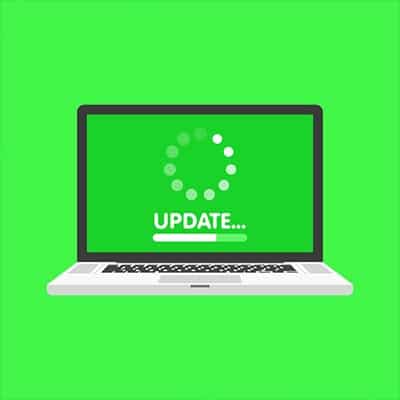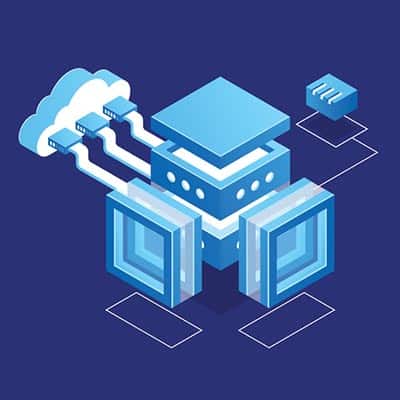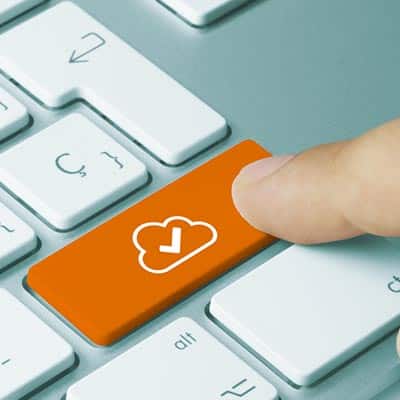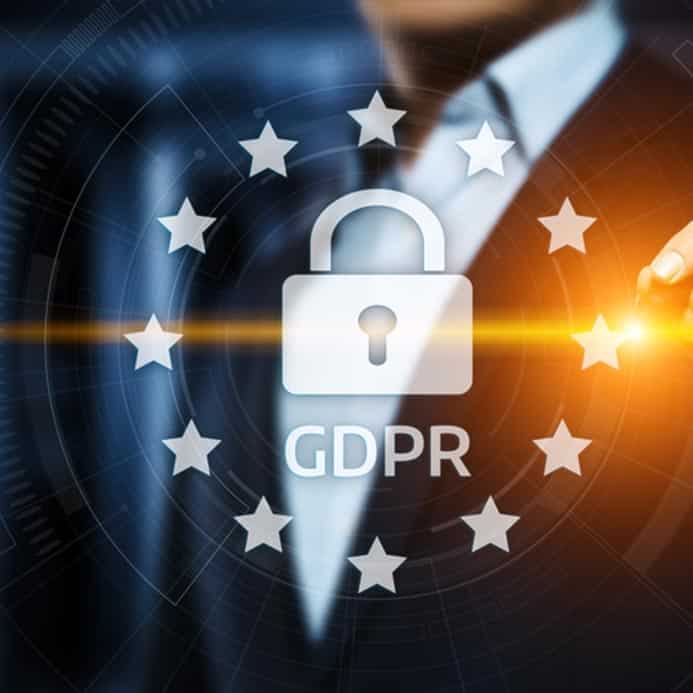Support for these two titles will end on January 14, 2020. If your business hasn’t upgraded away from them yet, you should start to take measures now. If you don’t attempt to do it immediately, it’s critical that you at least begin to think about the process, as a full migration takes time that you won’t have six months from today. Vulnerabilities can show up when you least expect them, so let’s take a look at these titles now to make sure that you can prioritize security during this shift. Windows 7 Windows 7 has remained one of Microsoft’s most popular operating systems for quite some time. It wasn’t until just this past December that Windows 10, Microsoft’s latest operating system, surpassed Windows 7 in number of users. You may have already seen the advertisement campaign warning users to upgrade away from Windows 7 as soon as possible. The most logical step forward for organizations that need to upgrade away from Windows 7 is to make the jump to Windows 10. Windows 10 is constantly supported, meaning that it instantly has an upside that is simply impossible to replicate with Windows 7. If you need to move a lot of workstations over to new operating systems, it will be difficult for you to do so in a timely manner. In cases like this, it’s best to work with our consultants. Another option is to go the Microsoft 365 route, which is a cloud-based service that targets the millions of Windows 7 users that don’t have the capital to cover the initial costs of an upgrade to Windows 10. SRS Networks can help you determine the price of migration to an on-site infrastructure or a hosted solution. Either way, your business has until January 2020 to make the move. Windows Server 2008 R2 In addition to Windows 7, Microsoft will also be retiring its Windows Server 2008 R2 suite. This means that any organization that relies on it for data and application hosting will need to have a migration plan in place well ahead of the support date. Just like Windows 7, Microsoft will stop delivering security patches to Windows Server 2008 R2, meaning that there is a significant chance of your business becoming vulnerable to threats. Microsoft has issued two new versions of the Windows Server software, as well as implemented the cloud-based Azure platform. It could potentially save you money when you’re making the jump to a new operating system. For more information about how to make sure this happens without a hitch, be sure to contact the IT professionals of SRS Networks at (831) 758-3636.
A recent survey found that, despite the increased awareness and investment into cybersecurity concerns, sixty percent of interviewed organizations had been breached in the past two years – often via vulnerabilities that had already been patched. Approximately one-third of the organizations surveyed didn’t even know what hardware or software they were running. It is pretty obvious that this isn’t an ideal situation. Patch Mismanagement Isn’t a New Problem You may recall the WannaCry and NotPetya attacks that created a significant stir back in 2017. Technically speaking, these attacks shouldn’t have been nearly as newsworthy as they were, as the vulnerability they relied on (the EternalBlue exploit) had been patched by Microsoft two months before WannaCry struck. Unfortunately, the responsibility for this falls squarely on the organizations that were ultimately affected by these attacks and the fact that patches simply aren’t being applied as they should be to these business’ endpoints. All it takes to create a sufficient vulnerability is a single device that hasn’t been properly updated. How Can This Be Improved? There are a few practices that you can endorse in your business to ensure that your patches remain well-managed. Have a Patch Management Policy Let me ask you something: would you rather an emerging cyberthreat catch you on your laurels and make you stressfully scurry around to apply a patch that you just found out about, or, would you rather have a strategy laid out ahead of time so your team can efficiently test and apply the needed patches when they are published? A patch management policy allows you to accomplish the obviously preferable second scenario, outlining processes and responsibilities so that everyone knows what they need to do, and when they need to do it. As a result, your patch management becomes much, much simpler. Test Your Patches While properly patching your solutions is serious business, you need to go about it in a collected way. Shooting from the hip (or in other words, just deploying the patch and forgetting it) could potentially create some problems with your other components or solutions. Instead, test new patches as much as you are able, and if you don’t have the resources to do that, roll out the patch gradually to help catch and minimize the damage done by any issues. Leverage Automation Automation can help with the efficacy of many business IT processes, and your patch management is no exception. Some patch management tools offer automation capabilities built in that allow you to cover more of your bases with less worry on your team’s part. Remember, Time is of the Essence Let’s look behind the curtain for a moment: the developers of your IT solutions and hackers are always in a race, developers to secure the solutions they have created against threats, and hackers to find new methods of getting attacks in. As a business who uses these solutions, and should be trying to avoid threats, promptly patching should be a priority. Do You Need Help Managing Your Business’ IT Solutions? When it all boils down to it, proper patch management is just one facet of a sufficient IT security strategy. SRS Networks can help you identify and deploy any other security needs your company may have, keeping your data and overall success rate protected against threats. Have concerns […]
Understanding Data Warehousing A data warehouse is different from a data center in that it is a system for analyzing and reporting on large amounts of data, rather than a place where you might store your server infrastructure. Even better is the data warehouse’s ability to help predict trends and put together a full forecast for what’s going to happen to your business. To truly understand the purpose of a data warehouse, you need to examine how warehouses work in the real world. In essence, a warehouse is meant to store things. It might seem like a simplistic way of describing it at first, but the important fact to remember here is that none of the other functions of a data warehouse can function without being able to store that data. If data is stored in a central location, it can be referenced against each other, meaning that the original source doesn’t necessarily matter as much. This data can be used to generate better analytics that aren’t limited by the amount of data you have access to. Selecting Your Data Warehouse Not all data warehouses are the same, and some different types offer different utilities. Therefore, the first question you must ask is if the data warehouse is sufficient for your specific needs. Here are some of the most important considerations you’ll need to think about for any data warehouse solution. For this explanation, it will suffice to split data into two types: structured and unstructured. Structured data is data that can easily be organized into a spreadsheet. If your data fits the bill, a relational database would likely be a good fit for your needs. Unstructured data (or semi-structured data) is data that is presented in less-uniform formats, like geographical data, emails, books, and the like. If you have a lot of this kind of data, you may want to consider utilizing a data lake over a data warehouse. How Immediate Does Your Data Need to Be? The intended use of the data infrastructure will be important, especially if you’re looking to take advantage of business insights or data analytics. If you want to find out more information about your business, having this kind of data available will give you a clear picture of it. If your business wants to implement a predictive analytics platform, you might need less data, as tracking trends can be done with a Relational Database Management System (RDMS), and it might not benefit from access to all kinds of data that your organization stores. How Are the Costs Structured? Different data warehouse solutions will be priced according to different factors, including storage used, the size of the warehouse, the number of queries run, and the time spent leveraging the solution. The way you use the solution should be based on how cost-effective it is for you, whether it’s based on frequent data usage or the sheer amount of data you store. Does It Work with the Tools You Use? You need to be sure that the solution you’re implementing is compatible with your current solutions. Otherwise, you aren’t going to be able to take advantage of the full value that you could get from your data warehouse. You could even wind up making more work for yourself unintentionally. We recommend working with SRS Networks […]
Team Building Getting a project team on the same page can be difficult, even if you are a subscriber to project management software that’s designed to centralize tasks and resources. This is especially true if your business works in multiple locations. With a reliable conferencing solution your team can meet with resources to share files, swap screens, and communicate with other team members. These tools work to boost collaborative efforts, turning what would be confusion into progress. Task Management Regardless of where your team works out of, it can be difficult to keep them working efficiently. There are numerous distractions and speed bumps to consider when working collaboratively. Conferencing solutions allow teams to stay on-task, and waste less time than teams that work without a centralized communications platform. Be More Collaborative Up until recently it was difficult to collaborate with others who weren’t close by. Today, however, conferencing solutions give an organization (or project team) the ability to lean on other team members better than ever. With options to share screens, send files, and directly communicate with your entire team, your organization has all the resources it needs to be more productive. Conferencing Saves Money Through Simplicity Conferencing presents an opportunity to save capital by allowing a project team to standardize their communications platform. The pure number of systems that you need are fewer than ever as some conferencing solutions are delivered through VoIP or productivity tools that you would already be subscribing to. Finding ways to be more effective while also saving money is music to the ears of any business owner. At SRS Networks, we can help you find the communications tools that are right for your business. We can present you with conferencing options that integrate with your current IT infrastructure more than you may think. Call us today at (831) 758-3636 to learn more.
What is a Deepfake, and How Are They Made? A deepfake is a fabricated video that makes it possible to literally put words in someone’s mouth. As demonstrated by multiple research teams, while this technology is not yet perfect, it can be used to create a very convincing video – or an even more convincing still shot. Deepfakes can be made using a combination of techniques and tools. Video Deepfakes Using a specialized software solution, a video is scanned to identify the phenomes (the different sounds that make up full words) that are vocalized. Once they are identified, the phenomes are matched with the facial expressions that produce those sounds (also known as visemes). A 3D model of the subject’s face is then built based on the original video. With the right software solution, these three factors can be combined with a transcript to create new footage and superimpose it over the original, making it appear that the person depicted is saying something that they never said. This creates a video that is just different enough to be disconcerting. A similar method, that relies on mapping the expressions a person makes in source footage and applying them to a second person’s face, can even be used to bring paintings and old photographs to life. Still Image Deepfakes While the still images of people that were produced by AI were initially low-quality and generally unconvincing back in 2014, today’s – just five short years later – are effectively indistinguishable from the real deal. This is thanks to a technique known as a generative adversarial network. Using this technique, one AI generates images of people’s faces, anticipating feedback on how it did. In order to reach the desired level of photo-realism, it could potentially take millions of repetitions – something that nobody has time for. Instead of subjecting a human being to the process of critiquing millions of images, a second AI is used to guess whether the picture was actually created by the first AI, or is a legitimate picture. While neither is particularly effective when first starting out, they swiftly improve in their capabilities over time, and can soon make images that are effectively indistinguishable from actual photographs of real people. Neither of the people pictured here actually exist – they were instead created by NVIDIA in one of their machine learning AI initiatives. As a result, we can see a dramatic rise in the capability for people to spread falsehoods and generally make the Internet a misinformative place. How Misinformative? Let’s look at a relatively recent example of how impactful altered video can be. In May of this year, video of House Speaker Nancy Pelosi blew up on social media that made her appear to be making a speech while intoxicated. Edited to make her sound as though her words were slurred, the original footage had been reduced to 75 percent of its original speed, with the Speaker’s voice adjusted to make it sound more like her natural pitch. This wasn’t the only instance of this happening, either. In addition to this speech, originally delivered at an event for the Center of American Progress, Pelosi’s voice was also manipulated to make her, again, appear drunk as she spoke to the American Road & Transportation Builders Association earlier in May. […]
Cloud Considerations Businesses and individual users are both finding cloud resources to be exceptionally helpful, as they provide access to services such as file storage, file sharing, and web-based applications at the cost of a small monthly payment. Businesses are also now able to accurately gauge how much capital they have available. This might make you ask, “What’s the issue with cloud services?” Well, this access and affordability means that the cloud is a go-to resource for people hoping to get answers to their technology problems, which can in turn create whole other ones. Here are some topics to consider when thinking about how effective cloud computing can be for your business. Hardware Cloud computing means that your organization doesn’t need a centralized computing infrastructure on-site. With this in mind, however, some businesses still like to keep parts of their data infrastructure hosted on-site, and this requires hardware and tools needed to provision the system for your business’ needs. If you aren’t careful about this implementation process, you could see drastic differences in your business’ IT budget. It’s important to understand how you want to use these private and hybrid cloud environments so you’re not wasting resources. The Limitations of Hosted Hardware The cloud isn’t an endless computing resource. The more you use it, the more you will have to pay. Even if money isn’t a major issue for your organization, you need to be aware of the limitations of your hosted software, storage, and resources so that you can effectively plan and use your hosted hardware for your organization’s needs. Potential Expansion Your business will hopefully grow and produce more revenue, so your IT will play an important part in influencing this growth. It should be able to scale according to your needs. Cloud platforms will make it easier to grow, and through enhanced transparency you will be able to take better advantage of your business’ cloud resources. Of course, not every business will utilize the cloud in the same way. Unless you have tons of capital to throw away on trial and error, it is easier and more cost-efficient to work with trained IT professionals for your cloud needs. Whether you need a public, private, or hybrid cloud solution, we want you to know that SRS Networks will be there to assist you every step of the way. To learn more, reach out to us at (831) 758-3636.
It’s pretty great, right? With every silver lining, there is a darker, more dreary side. For cloud computing, it’s the fact that, like all technology, it is not inherently secure. The Cloud is (Basically) Just Someone Else’s Computer When you connect a computer to the Internet, you invite outside entities to try to infiltrate it. Viruses, malware, unpatched vulnerabilities, and other threats can creep onto an unprotected device and take over. This could lead to data theft or data loss. That’s why we all know to use antivirus and avoid using outdated software. That’s why we don’t install random software or visit sketchy websites. I’m pretty confident my reader base knows the drill here. The cloud is essentially no different. It’s just a computer or an array of computers connected to the Internet. If it isn’t properly protected, it can be compromised. If you use Google’s G Suite platform and your email is handled through Gmail, and you are storing files in Google Drive, then you are simply using Google’s computers to do so. If you are using Microsoft 365, then you are storing your email and data on Microsoft’s computers. *Side note, I miss being able to refer to anything related to Microsoft as belonging to Bill Gates. I’d love to be able to tell clients that they are using Bill Gates’ computers to store their Outlook. Maybe I just still haven’t come to terms with the fact that he stepped down from Microsoft back in 2006. The point is, while we can typically trust these massive services to handle our data correctly, we still need to be aware that we are depending on them to do so. On a smaller scale, you might use a local web hosting company, or you might pay to host a server at a smaller data center. The same applies – you are relying on this third-party to keep you safe. My gut tells me to be skeptical whether I’m entrusting a major corporation like Microsoft or a small company with a data center, but at least with Microsoft I know that millions of others are using the service. The Cloud Isn’t Always the Fast Path to Compliance Complying to industry standards like PCI DSS, HIPAA, and the GDPR can be a big undertaking, especially for smaller businesses. Often, a nice big step towards compliance can be to rely on a third-party who focuses on hosted environments that meet those compliance regulations. This means that moving towards the cloud is often a win, but you need to read and understand the fine print before you simply pull the trigger. For example, let’s say you are storing names and credit card numbers. You absolutely need to keep this data encrypted and control who has access. If your cloud host can get around that and employees can access the data, you might not fall under certain compliances. When it comes to protecting the data of your customers, there are a lot of moving parts and considerations, so spending a lot of time upfront and ensuring that your cloud solution can handle this, AND doing regular checks will have to become a way of life. Like Anything Else, It’s Only as Secure as Its Weakest Link (Sorry, End Users) Ever play Jenga, where you have to […]
The GDPR Prior to the ratification of the GDPR, individual data privacy was the responsibility of the individual. Outside of the EU, it largely still is, but when the GDPR went into effect it opened people’s eyes to just how many of the corporations they come into contact with were misusing their personal data. The GDPR, which grew from individual privacy laws enacted by individual EU states, provides individuals with recourse if they do not approve of the way their data is being used by corporations. Information such as names, physical addresses, phone numbers, email addresses, and medical and financial information were being shared by technology companies. Somewhere in the lengthy terms of service agreement, companies would have language that allowed them to package individual data and effectively use it as an alternative revenue stream. Consumers in the know don’t see this as fair. This level of data privacy has been roundly rejected in the United States up until recently, and those who do want to see a GDPR-like law on the books in the U.S. may not want to hold their breath. Before the GDPR was in the news, not many organizations were thinking about how data breaches could negatively affect anyone but themselves. This has led to a wholesale change in the way businesses view data management, the training of their staff, and security investments as a whole. After One Year In the first eight months, over 59,000 personal data breaches have been reported to GDPR regulators. This may be less than you may have liked to see, but it is twice as many as there were in 2017; and, of course, 59,000+ more than anyone wants. The fines levied by GDPR regulators are hefty (up to €20 million, or up to 4 percent of total revenue from the previous year, whichever is larger), so you are seeing an increase aligned and strategic approach to keeping data secure; and, reporting any data breaches that do happen quickly. If you would like to see how the GDPR has fared in its first eight months, download the DLA Piper GDPR data breach survey, here. The results of the GDPR don’t speak to its effectiveness thus far, but in future reports it will become evident that the law is working to keep individual data secure; or, at the very least, keeping companies honest. Under the GDPR, companies that sustain data breaches have 72 hours to notify the people whose information has been exposed. This strict deadline eliminates the possibilities that companies can manipulate public perception about how they are faring with data security, as you’ve seen numerous times over the past two decades. Unfortunately, the huge teeth that the GDPR was built with haven’t been used to bite non-compliant companies thus far. Fines that add up to €55,955,871 have been levied against the companies responsible for the 59,000 and change reported data breaches, an admittedly modest amount when you consider that around 90 percent of that sum was the fine levied against a single company, U.S.-based tech giant Google.. According to a French GDPR regulator, this small amount should be considered the result of it being a transition year than some type of long-term ineffectiveness of the law. It remains to be seen just how effective the law can be if […]
Let’s talk about how to make the switch between the two. Check to Make Sure You Have OneNote Installed If you are a frequent user of Microsoft OneNote, you’ll want to know what version you are actually using. If you have Office 2016 or Office 365, chances are you are using OneNote 2016. If you are pretty new to OneNote, you might just have the newer version that came bundled with Windows 10. If that’s the case, you don’t have anything more to do! If you aren’t sure, there are a few ways to check. The older version of OneNote is typically labeled as OneNote 2016 while the new version is just called OneNote. You’ll also notice a difference between the icons, as shown above. To check to see if you have the new OneNote installed, click on the Start Menu and type ‘onenote’ and you should see the app just labeled as ‘OneNote.’ If you have 2016, that should show up there too. If you don’t see the new version of OneNote, you are either very behind on your updates, or it wasn’t dished out to your workstation. Either way, it’s best to check with IT if that’s the case or give SRS Networks a call at (831) 758-3636. You can open and use the new OneNote app at any time, but your notes from OneNote 2016 might not appear. Keep in mind you’ll also need to sign into the new OneNote for the first time with your Microsoft or Office 365 account, which might require your IT admin. Migrating Notes from OneNote 2016 to OneNote OneNote 2016 has a couple different ways it can store a notebook. Chances are even if you use OneNote a lot, you probably don’t realize how it’s working behind the scenes, because it rarely asks you if and where you want to save something. That’s part of the beauty with every version of OneNote – once it’s set up, it just saves everything you do on the fly. First, Let’s Back Up Your OneNote 2016 Notebooks Back Up your OneNote 2016 Notebook Open OneNote 2016 and perform the following to back your notes up. Click File > Options. In the OneNote Options dialog box, choose Save & Backup. On the right, you’ll see a section called Save. Select Backup Folder. Click the Modify… button. Choose a destination to store your backup. A good spot would be a folder called OneNote 2016 Backup in your Documents folder or on your desktop. Once you’ve found a place to put your backup, click Select. Then click Ok on the OneNote Options dialog. Go back to File > Options > Save & Backup. On the right, in the section labeled Backup, click Back Up All Notebooks Now. Wait for OneNote to finish backing up your notebooks. Try Simply Opening Your Notebooks in OneNote OneNote 2016 stores all of your notes in notebooks. These notebooks, by default, are either stored in your Documents folder in their own folder, or on Microsoft OneDrive. You can also store notebooks on a shared location on your network or essentially anywhere else. If you are using one of the default options, the new version of OneNote will likely have no problem pulling up your old notebooks. Open OneNote (the new version) and […]
OneNote has been sort of a hidden gem over the last several years. It’s been included in most Microsoft Office packs, including Office 365 subscriptions, and for those who have discovered it and got to know it, it’s a great little app for taking quick notes, organizing thoughts, and most importantly, it even syncs with smartphones. If you’ve been using OneNote for a while, chances are you are using OneNote 2016, which over the last few years, has come with Office, including Office 365. You might have noticed how some Microsoft Office apps get little updates and tweaks over time, but OneNote 2016 hasn’t been given that kind of love. That’s because Microsoft has other plans for the app. OneNote is Leaving Office Although OneNote 2016 will still get support from Microsoft for a little while, their focus is on the OneNote app that comes bundled with Windows 10. In fact, there’s a very good chance it’s already installed on your computer. Click on your Start Menu and type OneNote and you’ll likely see two options; OneNote 2016 and simply, OneNote. These are two separate apps, and Microsoft is focused on making OneNote (Not OneNote 2016) the definitive version. What’s the Difference Between OneNote 2016 and OneNote? According to Microsoft, the big difference is that OneNote now comes with Windows 10, and it’s no longer exclusive to Office. It will still be bundled in with Office 365 and Office 2019, AND OneNote 2016 will still be available as an option for anyone who still needs it, for now. They’ve been adding new features to this new version of OneNote, especially when it comes to sharing, sorting, and dressing up your notes with annotations. If you have a computer or tablet with a pen, like the Surface Pro, support for that has improved a whole lot too. Microsoft has a big list of features available on the new OneNote, and a much shorter, and hopefully less critical list of features that are only on the older version. Check out both lists here. OneNote 2016 isn’t going to get new features, so if you want the latest and greatest capabilities, you’ll need to move everything over to the new OneNote. Fortunately, you can run both apps side by side, so you can play around with the new OneNote before you commit to migrating your notes over. Personally, this gave me some time to get rid of old notes and do a little spring cleaning, and since my notes were all organized into Notebooks, I was able to simply open up my Notebooks in the new app and start using them right away. We’re going to put together a guide shortly on how to migrate your OneNote 2016 notes into the new version of OneNote for those who might not be so lucky. Keep an eye on our blog!










